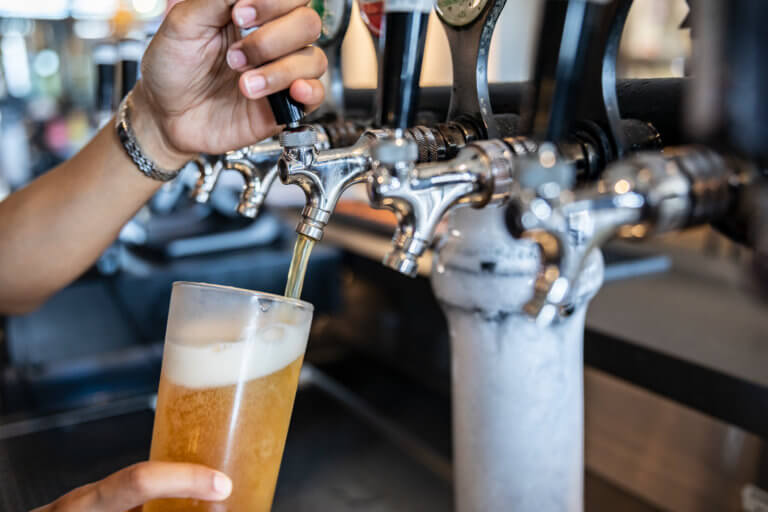All the components of a draught beer system.
I think we all can agree beer is great. Nothing beats the experience of having a freshly poured, ice-cold pint of your favourite beer. But what really goes on behind the scenes to provide you with the perfect beer? We’re here to let you know!
A draught beer system is what gets the beer from the keg to your glass. Rather than beer being served from a bottle or can, draught beer is what you’ll usually find in bars and pubs. There are 7 main components to a draught beer system – cool room, glycol system, keg, dispensing equipment, gas, tubing and tap (faucet).
Cool room
A cool room does what the name suggests and keeps the beer cold within a temperature-controlled refrigerated room. This aids in maintaining quality, taste and preventing spoilage from warm storage which speeds up bacterial growth. Many cool rooms will maintain a temperature of around 3 degrees Celsius – the recommended storage temperature for most beers.
Glycol system
In Australia we like our beer cold – so cold in fact that a cool room isn’t enough to achieve the desired temperature – so we use a glycol system. In short, it’s a system that constantly pumps food grade antifreeze mixed with water throughout the entire dispense system via ‘beer pythons’ and ‘chiller plates’ to enable sub-zero temperatures of beer. It keeps the beer in contact with glycol all the way from the cool room to the tap allowing for a long draw system to stay icy cold.
Keg
A keg is what beer is stored and transported in. Kegs have evolved immensely since the 1800s – check out our blog on ‘The Evolution of Draught Beer’ to learn more – today they come in many different shapes and sizes. Made from stainless steel, these vessels are designed to keep the beer in a condition as close as possible to when it was first brewed.
Dispensing equipment
Primarily made up of a keg coupler, FOB (foam on beer) detector and in some cases beer pumps. These items allow us to get beer out of the keg and dispense it from a tap, whilst minimising any waste that can come from changing a keg. Gone are the days of ‘spearing a keg’, it’s a simple 10 second task to change a keg today.
Gas
Carbon dioxide gas (CO2) is used to push beer out of the keg and maintain a constant flow. It’s important that pressure levels are controlled to ensure excess gas isn’t absorbed by the beer, resulting in fobbing (too much foam). However in long draw systems we switch to a mixed gas, or install beer pumps to allow for higher flow rates at longer distances.
Tubing
Tubing is an integral part to ensuring that beer does not turn into foam. The wrong type of tubing can cause all sorts of problems. These days most tubing in Australia is made of ultra smooth nylon designed to be flexible, but inhibit bacterial growth.
Tap or faucet
The final component of a draught beer system is the tap. We mostly see what is called the ‘universal tap’ in pubs due to their ease of use and servicing. However taps come in a big range, and are usually made from stainless steel – these include flow control, euro taps, creamer or stout taps. Just be sure to avoid anything made from brass, as when the plating wears away the brass can impact the beer profile.
So there you have it, those are all the components of a draught beer system. Bet you’re thirsty now – ready to hit the pub?

